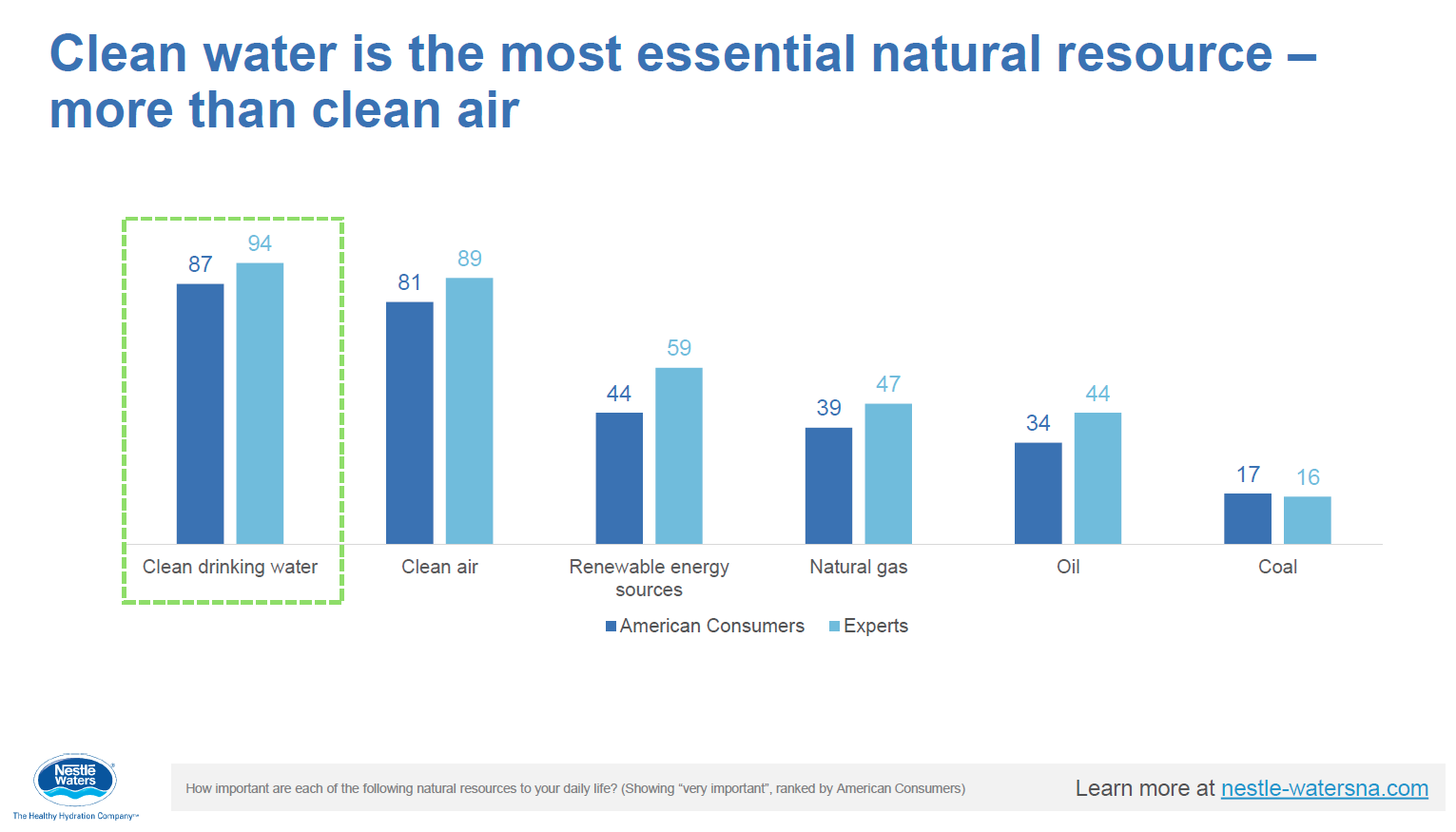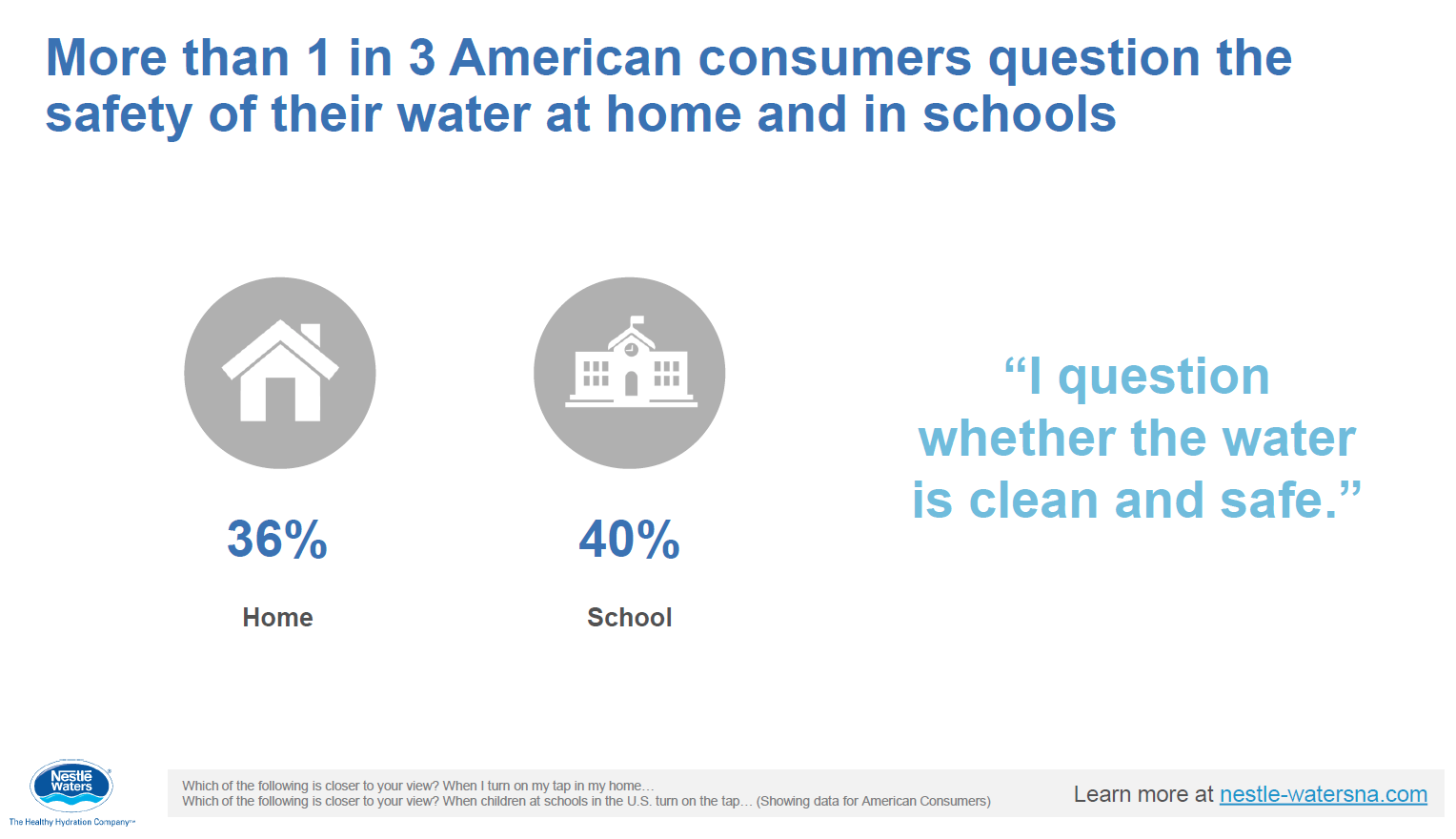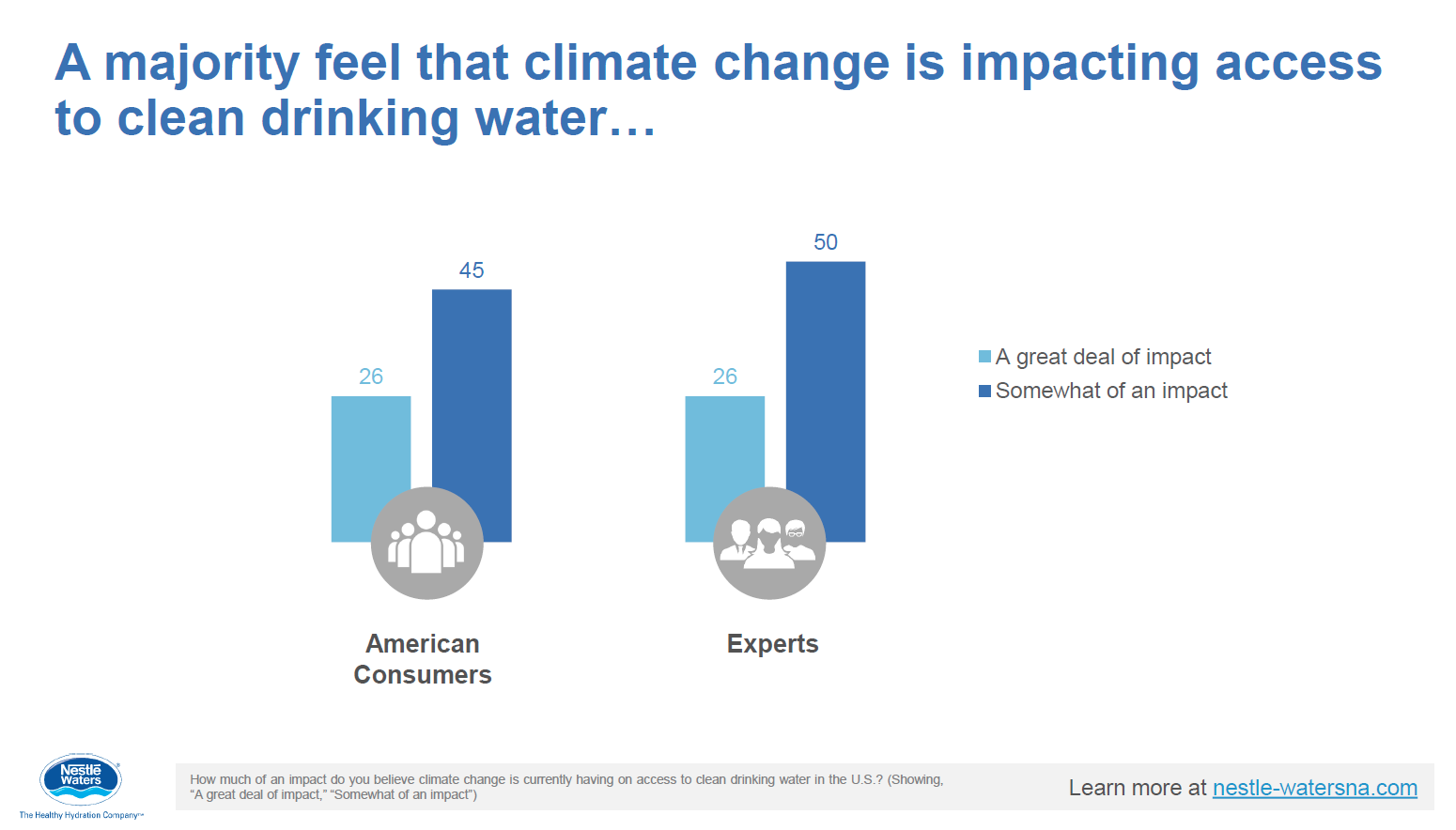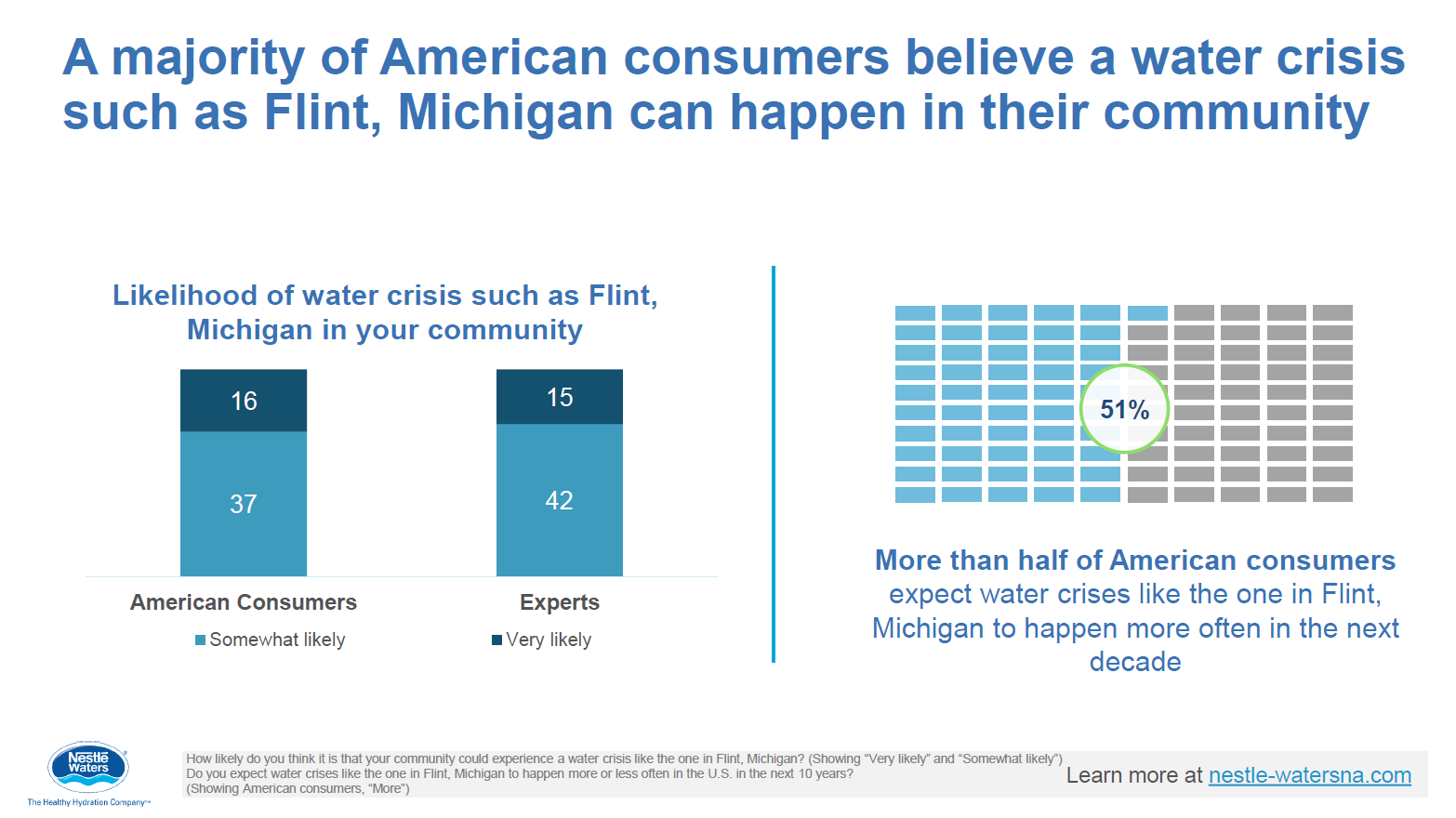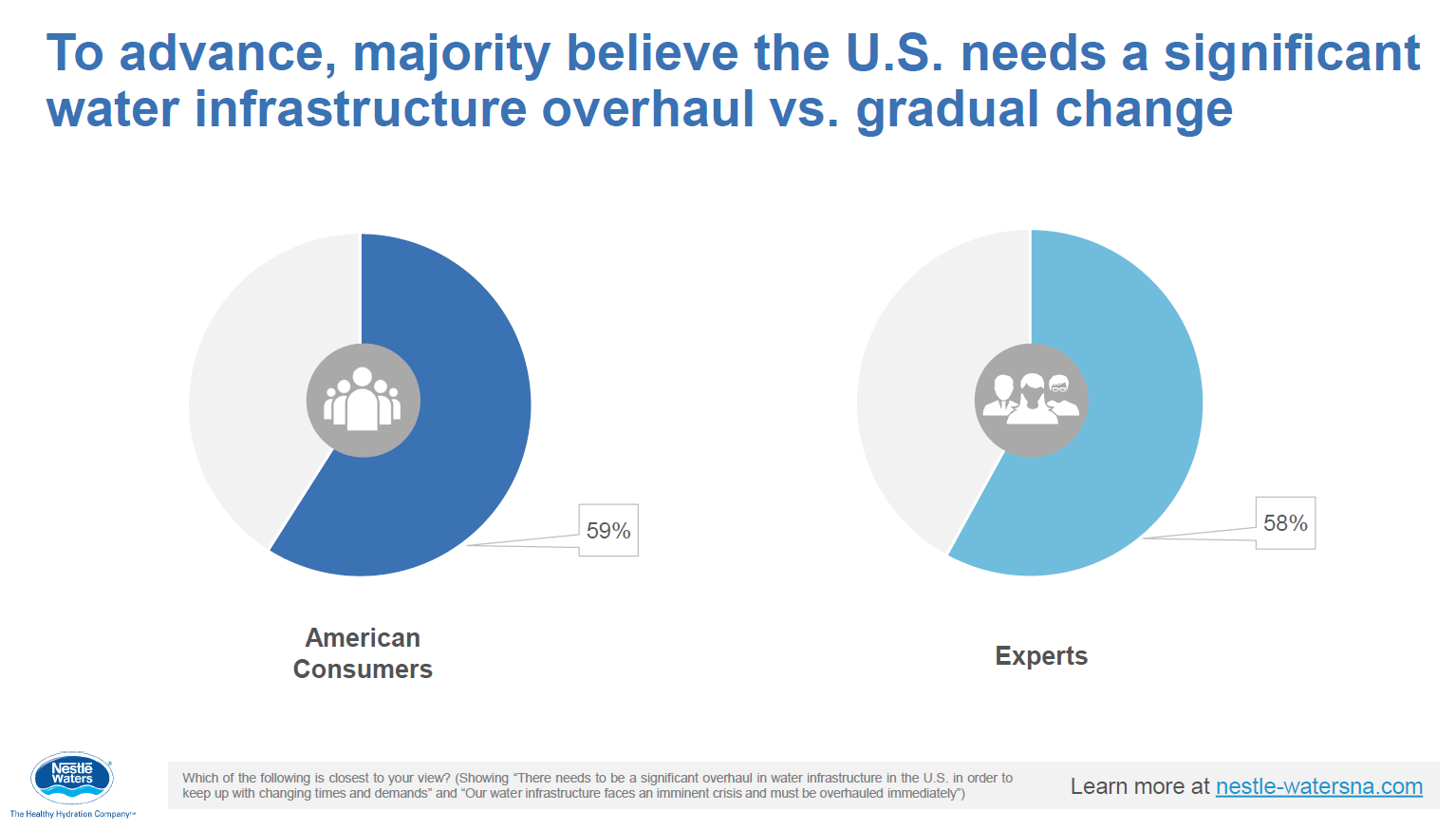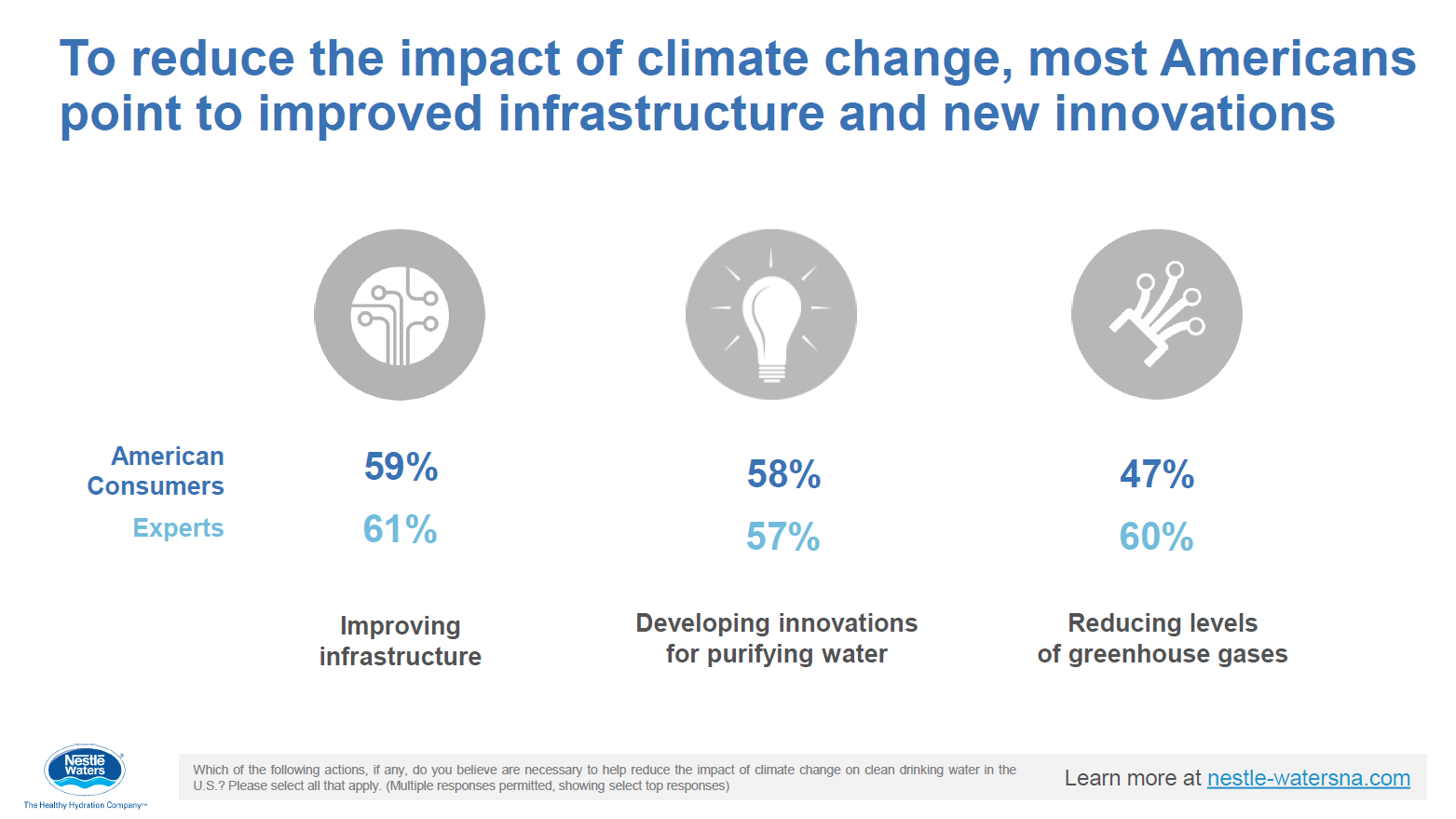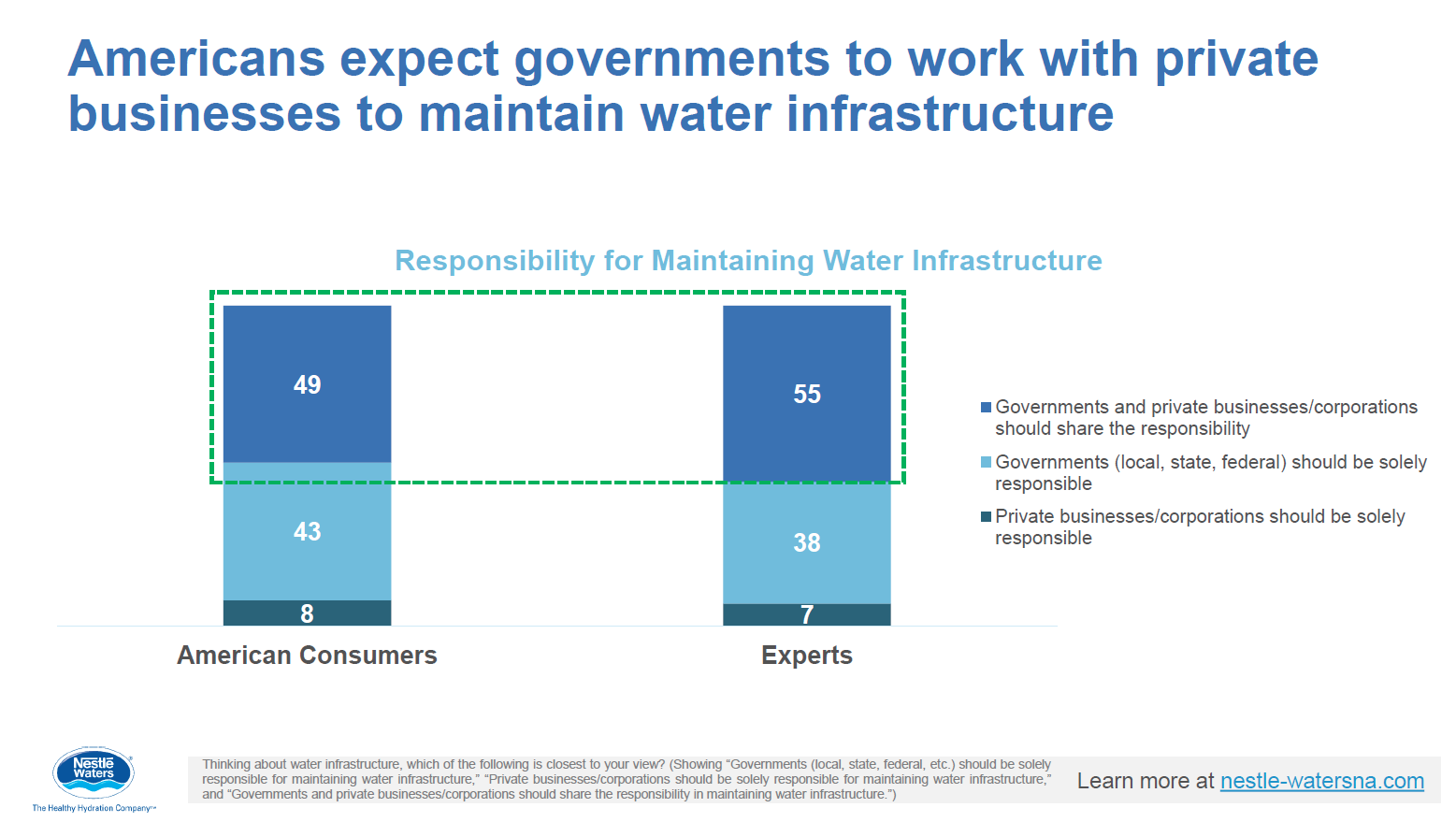Q&A with Nelson Switzer, Chief Sustainability Officer at Nestlé Waters

Nelson Switzer, Chief Sustainability Officer at Nestlé Waters North America. Photo courtesy of Nestlé Waters North America.
A May 2017 poll sponsored by Nestlé Waters North America found that 66 percent of U.S. consumers think their own community’s water supply is at risk. Four in 10 Americans question whether the water in U.S. schools is “clean and safe.”
The Nestlé Waters study, which was conducted by market research firm PSB, not only surveyed thousands of ordinary Americans but also sought the opinions of 375 water experts from government, academia, NGOs, and utilities.
To learn more about the study’s impetus, findings, and implications, I spoke recently with Nelson A. Switzer, Chief Sustainability Officer at Nestlé Waters North America, the nation’s largest bottled water company and owner of brands such as Arrowhead, Deer Park, Perrier, and Poland Spring.
Mitch Tobin: What motivated your company to conduct this survey?
Nelson Switzer: Water is our business. Because it’s our business, we have a special responsibility to care for it, both ensuring that we have what is needed to meet today’s needs but also for tomorrow and for generations to come. We are the nation’s leading bottled water company and, as we see it, our responsibility isn’t just to ensure that we sustainably operate the springs on which we rely, but also to help address collective water issues.
We wanted to have a really sound understanding of what people believe is going on when it comes to water—and what needs to be done to address existing water risks and opportunities. There is this connection between the perception and reality, so we thought it was important to get a thorough understanding of the perception people have when it comes to water, water security, and water infrastructure—and what will ensure its long-term sustainability.
Tobin: What was most striking or surprising about the findings?
Switzer: The top thing that really rang my ear was that Americans feel that clean water is more important than even clean air. That took me by surprise.
The second thing that was most striking—and frankly upsetting—was how many people are actually concerned about the quality of the water that comes from their taps. Over a third of Americans are concerned about the quality of water coming out of their taps. That simply should not be the case. Access to clean, safe, secure, sustainable drinking water should be a fundamental human right. The fact that anyone would have to worry otherwise, especially here in the United States, is troubling.
Two-thirds of Americans actually think their community’s drinking water is at risk. The fact that people are registering a level of concern that significant signifies that much needs to be done. Most Americans believe there’s a great need to invest in water infrastructure to avoid future water crises, and not just deal with what is happening today. Americans also expect this investment and revitalization of our infrastructure to result from public-private partnerships that include government, business, environmental organizations, and academia to secure a clean water future.
By and large, people still think government should be most responsible for ensuring access to clean drinking water. But they also recognize that to really do that—to ensure a secure water future—requires collaboration. That is a pretty amazing finding. It’s also clear that Americans care very deeply about the state of their drinking water and they believe investments and innovation are needed right now to avoid serious problems in the future.
There is also a connection to climate change that was identified. Americans recognize that climate change is actually posing a significant risk to clean water, access to water, and water infrastructure—that’s a pretty significant finding.
Tobin: The poll found high levels of concern about drinking water in homes and schools. Why do you think people are so worried?
Switzer: I think it’s a combination of factors. One of them would be Flint, Michigan. That is and continues to be a tragedy. I think it brought the clean water issue to the forefront. It’s become very clear to people that we need to invest in solutions right now. People are aware that this was a governance failure. This was a poor decision with a horrible outcome and the potential implications for the health of the children and adults in that community are shocking. Whether it was social media or traditional media, it spread around so quickly and raised such ire. Flint flagged the issue for people, and it’s one of the reasons they’re so worried.
Another reason is that we live in an increasingly globalized world. Many people that have come from other countries to settle in the United States drink bottled water because they ask the question and think: “Is my water safe here? It wasn’t safe where I came from.” So, there is an infusion of cultural water risk.
Tobin: Why did you decide to survey both consumers and experts? What was revealing about consumer versus expert opinion?
Switzer: We wanted to see, first of all, would there be a delta? Is there a distinction between those that toil about the issue of water on a daily basis and the general population?
The interesting thing is that, by and large, consumers and experts were mostly in agreement in their viewpoints, which is amazing. That either goes to show that the public is very well informed, which I’d always love to think is the case, or that the experts perhaps are looking at this from a different perspective that we hadn’t considered.
But there were some important distinctions. For example, experts were more likely than consumers to indicate that a water crisis would have widespread consequences for individuals, businesses, and the country overall. Experts were also more likely to believe that the impact of climate change on water in the U.S. will increase—about 58 percent of experts versus 51 percent of consumers. Experts are more likely to believe reducing the level of greenhouse gases is necessary to help reduce the impacts of climate change and the dangers for water. The majority of both groups believe the U.S. needs a significant water infrastructure overhaul versus a gradual change. Experts are more likely to say that an investment in water infrastructure now will help avoid higher long-term costs, but the fact is they both saw it as very important: 68 percent of experts versus 61 percent of consumers.
Another finding that I found quite striking is the distinction between those who are in a position of governance versus those who are in operations. Those who are in a position of governance actually didn’t think the need for investment was nearly as high as those who are operational. Those who work on the infrastructure on a day-to-day basis believe this needs to happen here and now, with considerable investment, whereas those in the governance position—those who determine policy, funding, and budgets—actually thought the necessity was much lower. It begs the question, “why?”
Tobin: How do you plan to use the survey’s results in your business?
Switzer: There are two ways. The first is to inform our own decision-making. My job here at Nestlé Waters North America is to help ensure we consider the environmental and social implications of the various decisions we make—whether they are benefits, of which there are many, but also there are challenges and impacts that we need to make sure we manage.
This data will also help us with the types of conversations we might have with potential partners. We are often looking for collective actions and partnerships to help us improve our operations where we live and where we work, so I think this will help us in terms of forging those partnerships, finding common ground in areas, and finding people who might have mutual areas of interests and opportunity.
On the other side, it’s already happening: we’re taking these findings forward to help inform robust conversations with people across the country. We have a dire need—and when I say we, I don’t mean just Nestlé Waters—I mean our communities at large need to have informed conversations, exchange ideas with mutual respect, and work together if we’re going to solve some of these incredibly pressing challenges. You’ve got policy issues at play. You’ve got economic issues at play. You’ve got social well-being, community cohesion, and community health. That’s a very complex mix, so we really want to use this as one of those tools to help stimulate conversation about community solutions.
Tobin: The poll talks about the need for more innovation to solve water problems. What does that mean for you as a business? What’s the role of the government, NGOs, and other stakeholders?
Switzer: Innovation requires partnerships, and there is a distinction between creativity and innovation. Creativity is thinking new things. Innovation is doing new things. A lot of time, people sit around and have creative conversations but nothing happens. Our goal is to help work in partnership with others to create and invest in those ideas so we can bring them to life: innovative water solutions.
There are some things we’re already doing by investing in innovation. We’ve joined as a beta partner of Imagine H20, an organization working to provide entrepreneurs with the resources, insights, and visibility into corporations and other water stakeholder groups who are struggling with these issues. They help look for those who can solve problems in an entrepreneurial sense. Another is the types of commitments we make collectively to preserve and protect our water resources. We have a partnership through the California Water Action Collaborative where we’re working with The Nature Conservancy and others to use forest thinning and management of the American River headwaters to increase the surface water flow in the American River while at the same time dramatically reducing the fire risk in that region and the forests of the Sierra Nevada.
How can we make more water available? We need more people and organizations with the technology, with the ideas, and with the applications to turn around quality issues. In California, we’ve partnered with the Cucamonga Valley Water District to actually construct a groundwater treatment project in Rancho Cucamonga in San Bernardino County. You’ve got a district that has contaminated groundwater that the community was relying on to feed and fuel the prosperity of their community. After decades of industrial activity and pollution, the district needed to treat this water—and we were very pleased to be a partner on this project. By treating the quality, we’re actually starting to make more water available for drinking. In the original projections, we believed about 150 million gallons of water per year for the region could be restored, but in fact, in the first year just over 240 million gallons of water has been restored.
The survey found that Americans think that cross-sector collaboration from a whole range of organizations is required—from government, businesses, environmental organizations, academia, and so on—in order for us to secure an abundant, clean water future for generations. We all have a role to play, both in innovation and in the security of the supply.
Tobin: This survey didn’t cover bottled water explicitly, but what has your other research told you about how the public thinks about choosing bottled water over tap water?
Switzer: Let me make it very clear: bottled water cannot and will not replace tap water for household use, including drinking water, and it should not. Tap water, bottled water, and filtered sources work together to ensure that people have access to the clean water that they need to meet their daily needs, such as hydration while they’re on the go, or meeting their requirements for sanitation in their home, or otherwise. That’s the first thing. The second is that we support consumer choice. We encourage consumption of water—whether it’s bottled or from the tap. Bottled water is just one option that consumers have that supports their healthy lifestyle. It’s an alternative when tap water is not readily available or, in many cases, for those who prefer the taste or portability of bottled water.
Tobin: Are you planning any future surveys related to water? What unanswered questions do you still have?
Switzer: For now, we’re going to use this data to inform our decision-making. I think we gathered quite a few important insights, so we have a lot of chewing on this data to do first. But I will say that this is the beginning of the conversation. We’re planning to share more state-specific findings in communities across the country over the coming months.
The most important question I would ask was asked in this survey: how important is clean water to you? I think that’s one of those items that’s going to inform some important decision-makers and decisions to be made at the governmental level. I certainly hope that various governments, businesses, and NGOs pay close attention to this research, because perception does guide—and is—reality in many cases.
Tobin: Anything else you’d like to add?
Switzer: It’s always important to remember that water is a renewable resource—as long as we maintain the system that supplies that water. As long as we can ensure that as the rain falls and the snow melts and it infiltrates into the ground, then we’ll have a sustainable supply forever as long as we make sure we don’t withdraw more than the system will permit. That’s really, really important. That’s how we maintain our natural infrastructure.
But we also need to maintain the built environment as well to ensure that Americans have a secure, abundant water future. Around the country, we have some areas where we get 10 percent to 40 percent leakage within their infrastructure. If you think about the amount of energy it takes to move water from place to place, that is a tremendous amount of wasted energy. When you think about the total amount of water that is used in industrial processes, in agriculture, and so on, the amount that is lost every day to poor or deteriorating infrastructure is outrageous. The fact that it prevents many people accessing clean, abundant sources of water to meet their daily needs is something that absolutely needs to be addressed.
Americans are telling us that clean drinking water is the most essential natural resource. Sixty-one percent told us that water problems are a crisis or a major issue in the states. Two-thirds of them believe their community’s drinking water is at risk. In urban communities, it was 70 percent. When most Americans are questioning whether the water in their home or their school is clean and safe—that is something that would make me lose sleep over.
We all need to care for this shared water resource and we need to do so in a way that is environmentally responsible and sustainable. It should be socially equitable, and it should be economically prosperous. If we can’t achieve all three of these goals, then we need to start asking some very big and some very complicated questions. I’m an optimist and I think we can do that. I know we’re doing that at Nestlé Waters and other companies have the opportunity to follow suit.
This July 25, 2017 interview was edited lightly for clarity and brevity.
WaterPolls.org aggregates, analyzes, and visualizes public opinion data on water-related issues. Stay informed via Twitter, Facebook, Pinterest, RSS, and email.


